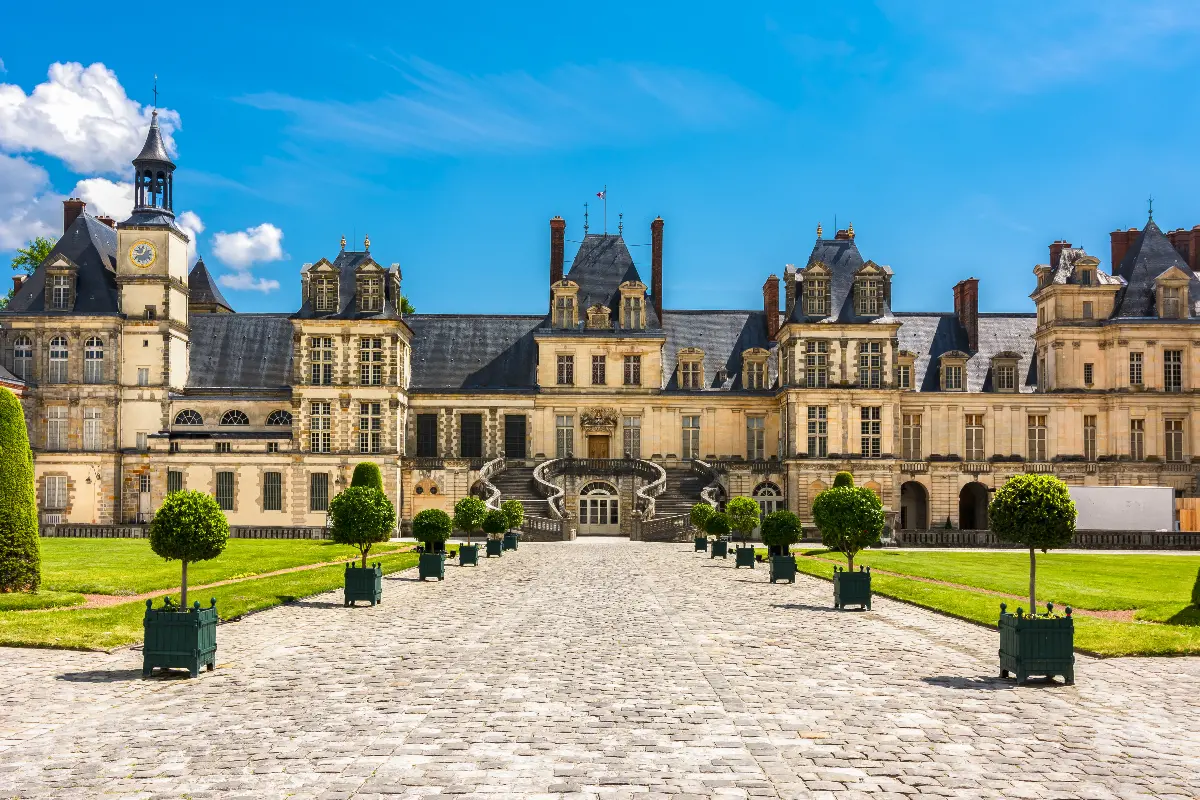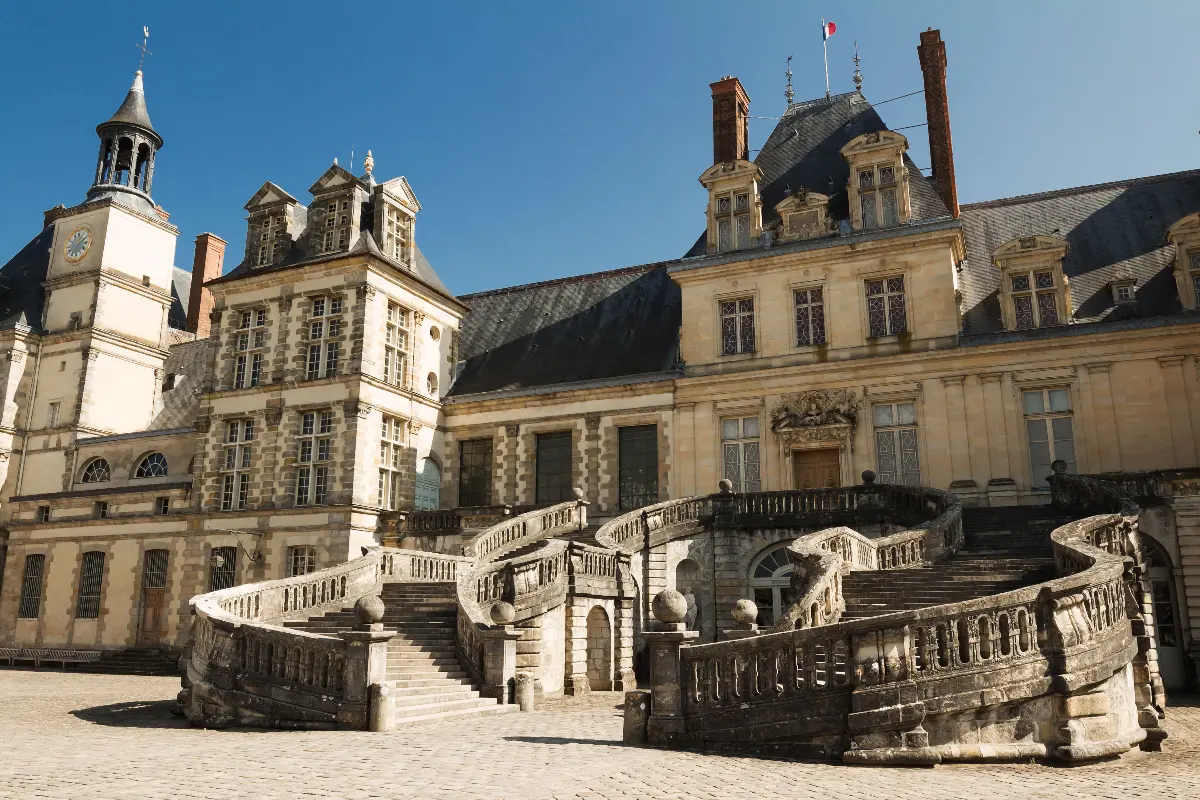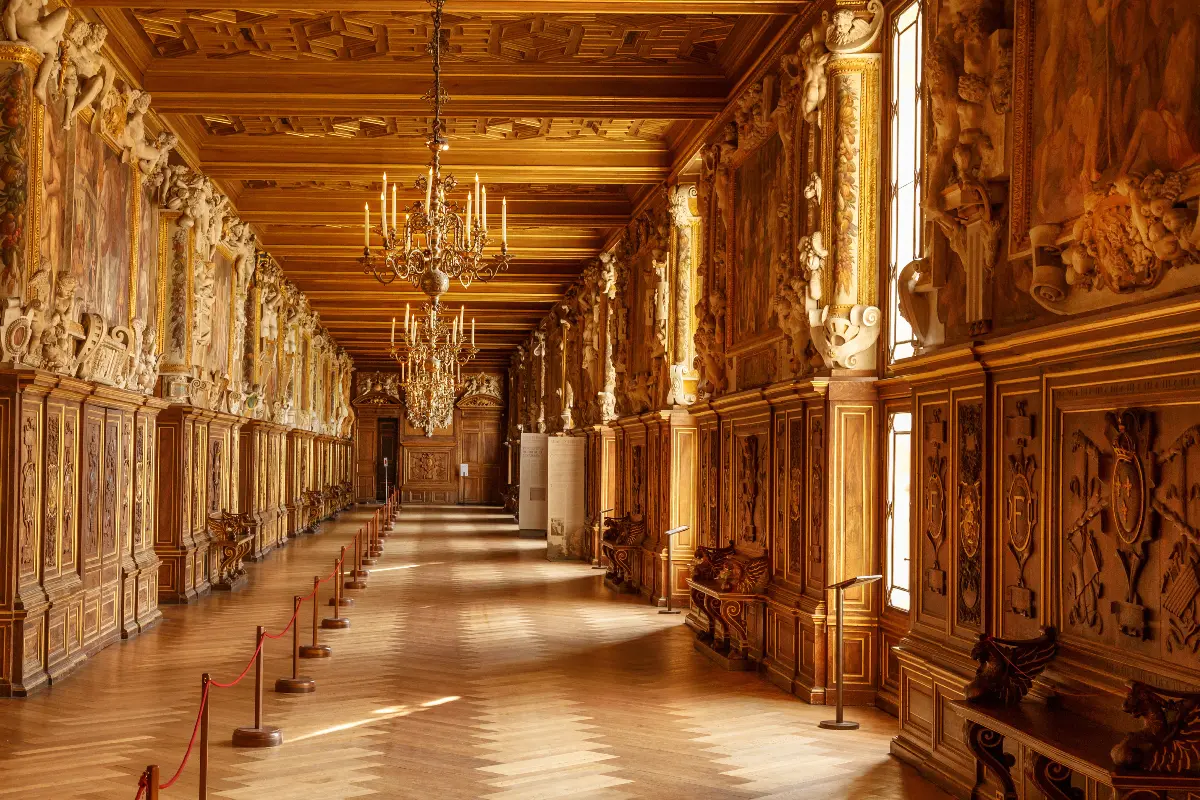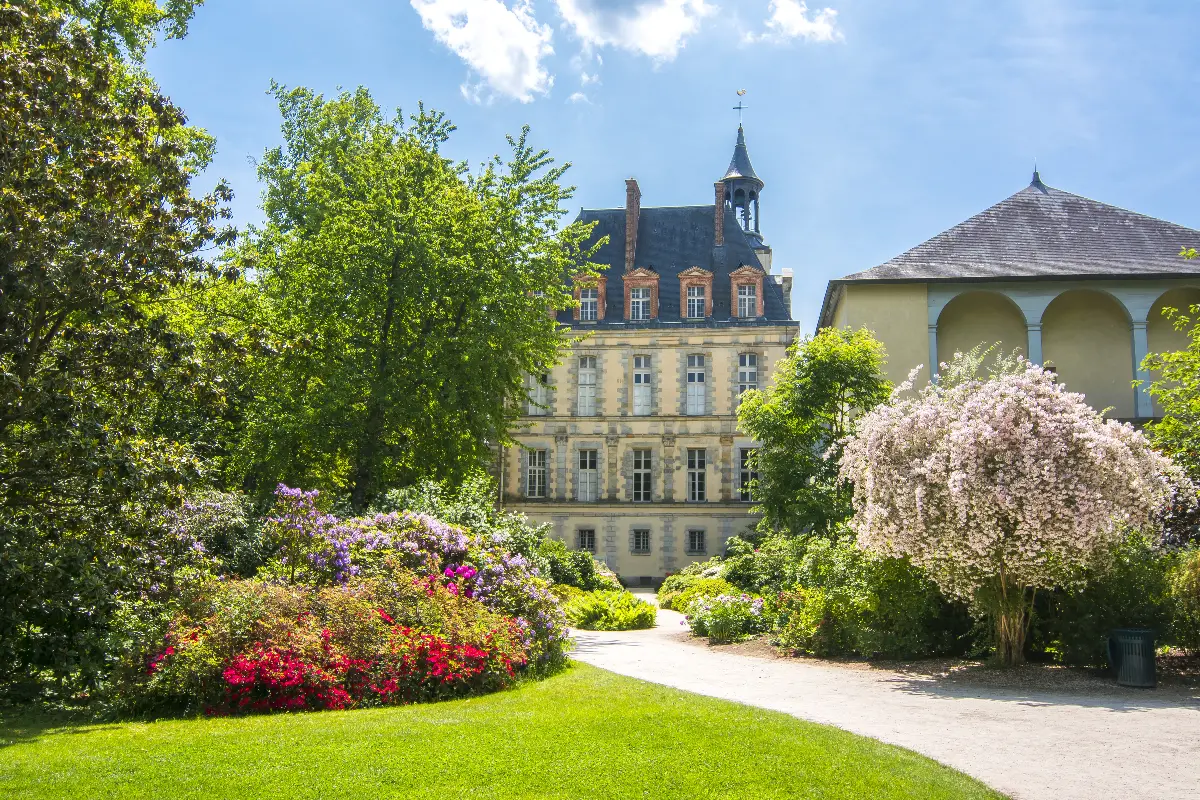Nestled in the heart of the French countryside, enveloped by lush forests and gardens, lies a monument of monumental historical significance: the Chateau de Fontainebleau. This grand estate is not just a château; it is a journey through time, a canvas of architectural mastery, and a testament to the life and times of one of history's most iconic figures—Napoleon Bonaparte.

The Chateau de Fontainebleau's history began long before the Corsican-born emperor made it one of his preferred residences. With roots stretching back to the 12th century, it served as a sovereign hunting lodge, a crucible of Renaissance art and a favored retreat for monarchs who each left their indelible mark on its fabric. As you approach the chateau through the town of Fontainebleau, you immediately sense the weight of history and the stories contained within its storied walls.
Upon entering the Horse Shoe-Shaped Courtyard, you are greeted with the château's impressive façade. It's a visual prelude to the opulence and grandeur that await inside. The architecture is an eclectic mix, showcasing French architectural evolution with elements spanning from Medieval to Classical times, reflecting the tastes of the various regents who resided here.

Inside, each room whispers tales of pomp and power. The famous Gallery of Francis I, with its high-renaissance frescoes, is a particular highlight. The intricate wooden panelling and stucco decorations were crafted by Italian artists brought to France by the king himself, and they have drawn admirers for centuries.
However, it was Napoleon who forever changed Fontainebleau, imprinting upon it his legacy. He famously restored and refurnished the estate to suit his image and needs as the Emperor of France. Napoleon's profound impact is keenly felt in the opulent Throne Room, the only one left in France, which he transformed from the former king's bedroom into a space fit for an emperor.

Venturing further, one discovers Napoleon's personal quarters, including his study — the Cabinet de Travail — where he signed his abdication in 1814, an act that forever altered European history. This intimate space holds a peculiar sense of stillness, as if the weight of that historic decision still lingers in the air.
The standout among the apartments is perhaps the luxurious Empress' Salon, originally adorned for Empress Josephine, Napoleon's first wife. The décor here, with its rich fabrics and gilded furniture, illustrates the opulence of the imperial era and showcases the exquisite taste of the era's most powerful woman.
But the chateau's wonders are not confined to its interiors. The sprawling gardens are a crucial part of the Fontainebleau experience. Commissioned by king Francis I and meticulously designed over years, they offer a serene escape from the grandiosity of the royal chambers. Here, visitors can stroll through the same paths once walked by kings, queens, and emperors, including the English Garden, a landscape garden designed during the reign of Henry IV, and the Grand Parterre, the largest formal garden in Europe, created by the renowned landscape architect André Le Nôtre, famed for his work at Versailles.

No exploration of Fontainebleau would be complete without a nod to the arts. The château was a hub of cultural innovation in its heyday, attracting artists, musicians, and scholars. Its collections feature an array of paintings, furniture, and decorative arts, reflections of centuries of royal patronage and the shifting tides of taste and politics.
While the Chateau de Fontainebleau is undoubtedly steeped in history, it is not merely a museum piece. It lives and breathes as a center for cultural events, equestrian shows, and classical concerts, making it a vibrant part of the local community and a bridge between past and present.
In its essence, a visit to the Chateau de Fontainebleau is more than a step into history; it is an immersive experience that bridges the gap between the centuries. Each footstep across the creaking parquet floors, every glance towards the ornate ceilings and out onto the vast gardens is a journey through the lavish narratives of French royalty and the indomitable spirit of one of Europe's greatest leaders.
For travelers seeking to delve into the opulence and intrigue of France's imperial past, the Chateau de Fontainebleau presents an untouched vista into the lives and legacies of those who have shaped not just a nation, but the modern world. Whether you're a history buff, architecture enthusiast, or simply a seeker of beauty, Fontainebleau offers an enchanting escape into a bygone era, showcasing the grandeur, ingenuity, and passion that define French artistic and political heritage.
